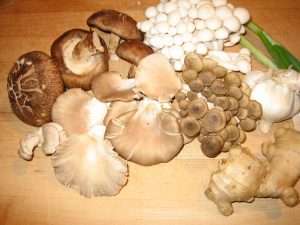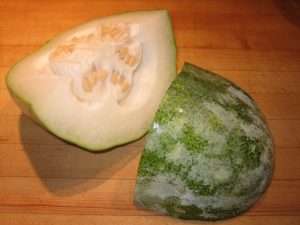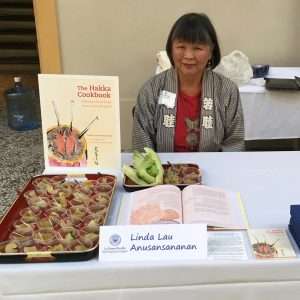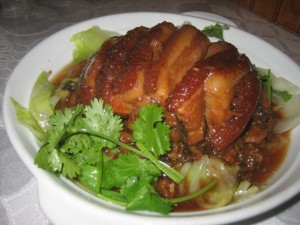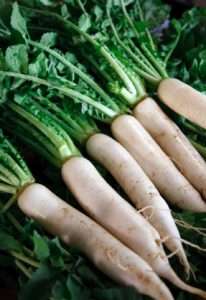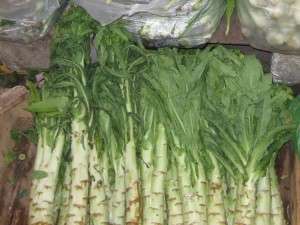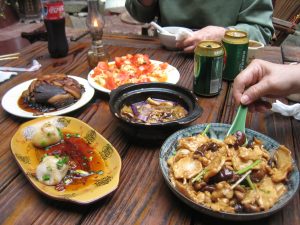 What is it like living in a Hakka village? On our recent trip to China, we spent one day and night living in a Hakka tulou and eating Hakka food for a true Hakka experience. We slept in the 138 year-old Tulou Fuyulou in Fujian province. We ate all our meals here–home-style fare with satisfying simplicity.
What is it like living in a Hakka village? On our recent trip to China, we spent one day and night living in a Hakka tulou and eating Hakka food for a true Hakka experience. We slept in the 138 year-old Tulou Fuyulou in Fujian province. We ate all our meals here–home-style fare with satisfying simplicity.
Our Hakka Meals
For lunch, simple stir-fry dishes appeared on the table such as tomatoes with eggs, eggplant with bits of pork, chicken with mushrooms, and beef with green peppers.  The soup paired local bamboo shoots with mustard greens and sliced pork. We loved the dumplings stuffed with bamboo shoots and mushrooms. The host said the chewy dumpling dough contained mashed cooked taro and tapioca starch. The Hakka classic steamed pork belly with preserved mustard greens (kiu ngiuk moi choi) arrived last. My favorite dish was the eggplant which resembles the recipe for Braised Eggplant, Pork, and Mushrooms in The Hakka Cookbook (page 93).
The soup paired local bamboo shoots with mustard greens and sliced pork. We loved the dumplings stuffed with bamboo shoots and mushrooms. The host said the chewy dumpling dough contained mashed cooked taro and tapioca starch. The Hakka classic steamed pork belly with preserved mustard greens (kiu ngiuk moi choi) arrived last. My favorite dish was the eggplant which resembles the recipe for Braised Eggplant, Pork, and Mushrooms in The Hakka Cookbook (page 93).
After a few hours exploring the village, we returned to eat dinner. The chef allowed us to watch him in the kitchen as he and his staff cooked our dinner. He dipped small whole smelt into a batter and deep-fried the tiny fish until crisp, just like my mother did in California. For the soup, the cook heated frozen precooked beef balls in a light broth or water. She poured the boiling hot broth and meatballs over chopped celery, green onion, and a small handful of chopped fresh squid in a large serving bowl. The boiling liquid instantly cooked the raw ingredients.
 To prepare Ginger Duck, the chef chopped half a steamed duck into bite-sized pieces and stir-fried the duck with garlic, lots of sliced fresh ginger, and green onion. He added a little light and dark soy sauce, and a generous splash of water. A drizzle of cornstarch slurry to the cooking liquid lightly thickened the sauce as it came to a boil.
To prepare Ginger Duck, the chef chopped half a steamed duck into bite-sized pieces and stir-fried the duck with garlic, lots of sliced fresh ginger, and green onion. He added a little light and dark soy sauce, and a generous splash of water. A drizzle of cornstarch slurry to the cooking liquid lightly thickened the sauce as it came to a boil. 
A couple of stir-fries followed. Soy sauce lightly seasoned potato sticks with pork strips. Blanched bamboo shoots, pickled mustard greens, and green onion cooked together for simple vegetable. Local greens with slightly bitter leaves wilted briefly in water, then a beaten egg was drizzled in the liquid, to create egg flower-like swirls. We sipped the local sweet rice wine to end another satisfying meal of Chinese comfort food eaten at a Hakka tulou.


